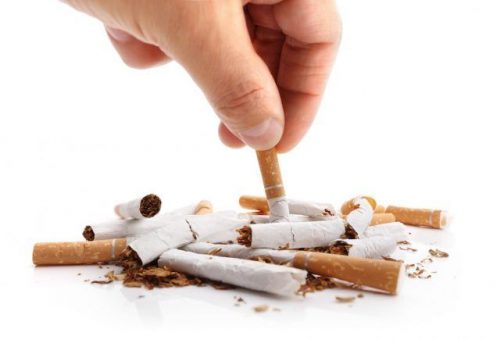Source:
Author: Julia Mullaney
Smoking’s destructive nature has been known for quite a while. But many people think that a cigarette here and there is okay, or smoking is fine as long as you quit while you’re young. But what’s the truth? How much — and for how long — do you need to smoke before it does irreversible damage to your health? We broke down all the facts.
Smoking’s negative effects start with the first puff
The moment you inhale a cigarette, there are instant effects — even if it’s only your first time. The tar in cigarette smoke instantly hits your teeth and starts damaging your enamel. It also hits the gums and starts to do damage. Over time, the gums turn black.
The smoke then hits the throat, where it damages the esophagus lining. In time, this is what leads to throat cancer. It also damages the cilia in your trachea, preventing them from being able to clean away the tar. The smoke then travels to the lungs, where the tar builds up and stays. The tar damages the lungs’ natural cleaning process, which hurts lungs’ ability to work and makes them more susceptible to serious infections.
Finally, inhaling that puff of smoke also means inhaling carbon monoxide, which gets absorbed in the blood stream instantly. You might feel tired and out of breath, and over time this leads to heart disease because it takes away the oxygen that is supposed to travel through your cells and replaces it with carbon monoxide. The nicotine in the cigarette also travels to your brain, which releases “feel good” dopamine and makes you want more. And so the smoking addiction begins.
Smoking’s lasting effects can begin as early as your teen years
In a 2018 study, it was found that teens who smoke and drink alcohol already showed signs of stiffening arteries — something that can lead to serious heart trouble down the road. If you begin smoking as a teen, you don’t even make it out of your teen years before the body starts to be seriously damaged. Smoking and drinking at a young age leads to the progression of atherosclerosis, which occurs when plaque forms on the inner walls of the arteries. Eventually, you might suffer a heart attack, heart disease, and heart failure.
If you start smoking before 25, your lungs will never fully develop
The lungs don’t fully develop until around age 25. If you start smoking as a teen, they never get the chance to reach full size because of the damage caused by cigarettes. Even if you quit, your lungs won’t magically get bigger. However, if you don’t begin smoking until your lungs are fully developed, you can at least reverse most of the damage done to the lungs — but that also depends at what age you quit. According to Thrillist, in order to cut your risk of smoking-related death by 90%, you need to stop smoking before you turn 40. However, the sooner the better.
Smoking for less than one week can inhibit your lungs’ performance
It doesn’t take long for smoking’s effects to damage the body. Actually, it only takes about five to seven days. Since a cigarette fills your lungs with dangerous chemicals, the lungs can’t make a full recovery. And if you keep smoking — say, a few times per day — the lungs never have a chance to get rid of the gunk that filled them. After just a little while, those chemicals will harbor in the lungs and cause lasting damage. Plus, they can lead to various cancers.
But quitting still outweighs not quitting, despite the lasting effects
While the lungs of a smoker will never as healthy as smokeless lungs, the benefits of quitting greatly outweigh not quitting. Your body does have the ability to bounce back. After being smoke-free for just six hours, the carbon monoxide levels in your body decline and the heart starts to function more normally. After a couple of months, your lung function can improve by up to 30%, and you won’t have the horrid cough you’ve had for years. After nine months, your heart is almost totally out of the danger zone (this does depend on age, though). Over time, the body rebuilds itself and heals the damage.


Leave A Comment
You must be logged in to post a comment.